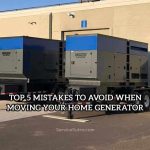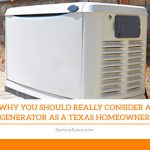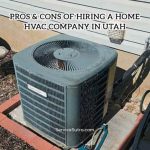Installing a home generator is a smart investment, especially in areas where power cuts are common. But even a powerful generator won’t do much good if it’s installed incorrectly. After interviewing electricians and analysing National Fire Protection Association reports, we’ve identified the 5 most critical mistakes homeowners make when installing generators.
Key Takeaways:
- Wrong generator size = wasted fuel or dangerous overloads
- Bad placement causes 75% of carbon monoxide incidents (NFPA)
- Skipping permits can lead to $500+ fines in some areas
- Backfeeding electricity can electrocute utility workers
- 90% of generator failures stem from poor maintenance
In this post, we’ll explore the top 5 mistakes homeowners often make when installing a generator—and how to avoid them. Whether you’re going DIY or hiring an installer, these insights will help you ensure a safe and efficient installation.
Mistake #1: Choosing the Wrong Size Generator
Why it’s a problem:
Many homeowners either overestimate or underestimate their power needs. An undersized generator may trip or fail under heavy load. An oversized one wastes fuel and money.
What to do instead:
Calculate your total wattage needs. Use a generator sizing calculator or consult an expert to find the right size based on your home’s appliances and backup needs. And when possible, add 10-15% extra capacity for safety.
Mistake #2: Improper Generator Placement
Why it’s a problem:
Placing the generator too close to windows, doors, or vents can lead to carbon monoxide poisoning. Improper outdoor placement may also affect airflow and performance.
What to do instead:
Install your generator at least 5 feet away from doors and windows, with good ventilation on all sides. Never install in enclosed spaces or near flammable materials.
Mistake #3: Skipping the Transfer Switch
Why it’s a problem:
Directly plugging appliances into a generator is risky and inefficient. Worse, it can cause backfeeding, posing a danger to you and utility workers.
What to do instead:
Always install a manual or automatic transfer switch to safely connect your generator to your home’s electrical system. This ensures smooth transition and safety.
Mistake #4: Not Getting Necessary Permits or Professional Help
Why it’s a problem:
Installing a generator without a permit can result in legal issues or fines. Poorly executed DIY installations may also void your warranty or cause electrical hazards.
What to do instead:
Check with your local municipality about permits. For permanent or whole-house generators, it’s best to hire a licensed electrician or professional installer.
Mistake #5: Ignoring Regular Testing and Maintenance
Why it’s a problem:
Even the best generator can fail during an emergency if not maintained. Dust, oil issues, or battery failure are common if left unchecked.
What to do instead:
Test your generator monthly. Change oil, clean filters, and check battery health regularly. Set reminders or get a professional annual maintenance plan.
Need more guidance? Explore our related guides:
Final Thought: Better Safe Than Sorry
Your home generator is only as reliable as its installation. Avoiding these five common mistakes can mean the difference between backup power that works or one that fails when you need it most. Take the time to plan properly, follow safety codes, and don’t hesitate to consult professionals where needed.






